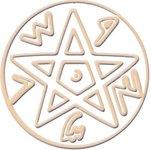Teaching and research activities in the field of archaeology began at the Hebrew University in 1926, shortly after its foundation. The university’s Department of Archaeology, opened in 1934, is the oldest archaeology department in Israel . The collections of the department were housed in The Museum of Jewish Antiquities, founded thanks to the donation of G.M. Kootcher of South Africa and completed in 1941, and this is also where teaching and research took place.
For more than 30 years since its opening, until the Institute of Archaeology at Tel Aviv University was founded in the late 1960s, the Department of Archaeology of the Hebrew University was the only institution in the country in which teaching and research in archaeology took place. Consequently, this is the birthplace of Israeli archaeology. The first teachers were E.L. Sukenik (ancient synagogues, the Dead Sea scrolls) and E.L. Mayer (Islamic archaeology). In the following years they were joined by N. Avigad (archaeology of the First and Second Temple periods), M. Avi-Yonah (classical archaeology), Y. Aharoni (archaeology and historical geography), M. Stekelis (prehistoric archaeology) and Y. Yadin (archaeology of Israel and the ancient Near East). These are indeed the founding fathers of Israeli archaeology: anyone currently active in the field in this country is a first- or second-generation student of these scholars.
 N. Avigad; E.L. Mayer; M. Stekelis; E.L. Sukenik; N. Avigad, R. Amiran and Y. Yadin
N. Avigad; E.L. Mayer; M. Stekelis; E.L. Sukenik; N. Avigad, R. Amiran and Y. Yadin
As a result of the War of Independence, when Mount Scopus was cut off from the rest of Jerusalem, the Department of Archaeology was transferred to the center of the city, and from the late fifties it continued its activities at the Giv‘at Ram campus. The building housing what was by then the Institute of Archaeology , named after Queen Elizabeth of Belgium, was founded thanks to donations from the Belgian Friends of the Hebrew University.
After the Six-Day War, the Institute of Archaeology was one of the first departments to return to Mount Scopus. The Museum of Jewish Antiquities was enlarged and restored, thanks to the support of the Carasso family, and was designated as the research wing of the Institute. An additional wing, in which all teaching activity takes place, was added to the building, once again thanks to the generous help of the Belgian Friends of the Hebrew University, and bears the name of Queen Elizabeth of Belgium.
 Excavating at Gesher Benot Ya'aqov, 1930s | Opening of the Institute with Queen Elizabeth of Belgium
Excavating at Gesher Benot Ya'aqov, 1930s | Opening of the Institute with Queen Elizabeth of Belgium
Archaeological excavations constitute a major aspect of the Institute’s research activity. Many of the most significant excavations carried out in this country were conducted by the Institute, the majority of them in collaboration with the Israel Exploration Society, with which our Institute maintains a close relationship. Among the better-known sites excavated are Akhziv, Amud Cave, Avdat, classical and biblical Beth Shean, Beth Shearim, Caesarea, Deir el-Balah, Dor, Elusa, En-Gedi, Hammat Gader, Herodium, Hayonim Cave, Hazor, Jericho (Second Temple period), Jerusalem (Temple Mount, Upper City and City of David), the expedition to the caves of the Judean Desert, Gesher Benot Ya'aqov, Kebara Cave, Kefar HaHoresh, Mamshit, Masada, Megiddo, Miqne-Ekron, Qafzeh Cave, Quneitra, Ramat Hanadiv, Rehovot-in-the-Negev, Sha‘ar Hagolan, Sepphoris, Tel Batash, Tel Mevorakh, Tell Qasile, Tel Rehov, Tel Qashish, Tiberias, Ubeidiya, and Yoqne‘am.
A number of excavations abroad, ranging from the Paleolithic to the classical period, have involved members of the Institute. Among these are excavations of very early Paleolithic sites in Hadar in northern Ethiopia and the Middle Paleolithic Dzouzouana Cave in the Republic of Georgia, excavations in the Late Bronze Age site of Athienou in Cyprus, and the excavation of a synagogue at Saranda in Albania.

